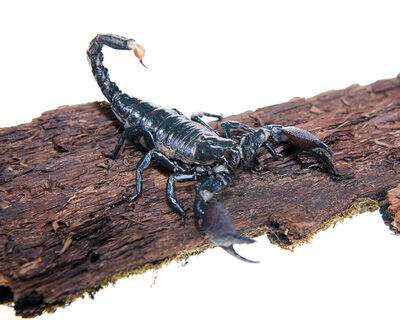Scorpions are some of the most formidable creatures on the planet. Wielding grasping pincers for hands and a menacing tail that serves as a deadly weapon, these nocturnal hunters are a type of predatory arachnid.
Their method of attack? Envenomation—the process by which a scorpion uses the stinger on its tail to inject venom.
A scorpion’s tail is made up of five segments of the abdomen, curved upward, with a final segment called the telson at the end. This is where venom is produced.
Here’s a fascinating fact: Scorpions can control when to produce venom and adjust its potency. They modify the venom’s strength depending on whether they need to secure prey for a meal or defend themselves against a threat.
Giant Scorpions of the World
The Emperor Scorpion and Giant Forest Scorpion are the largest species in existence, making quite the impression with their size and power.
A Glow in the Darkness
Did you know that scorpions glow pastel green or blue under ultraviolet light? This eerie glow is caused by their exoskeleton, specifically a thin layer called the hyaline layer, which reflects UV light.
Interestingly, even fossilized scorpions retain this glowing property when exposed to UV light!
Scorpions in the Spotlight
Not long ago, only about 600 species of scorpions were known. Thanks to ultraviolet light being used to locate them, scientists have now documented over 2,500 species—and the list keeps growing.
While they might seem like creatures of nightmares, scorpions are truly remarkable examples of nature’s adaptability and resilience. Whether it’s their venomous tails, UV-induced glow, or their expanding global catalog, scorpions continue to fascinate and amaze.







